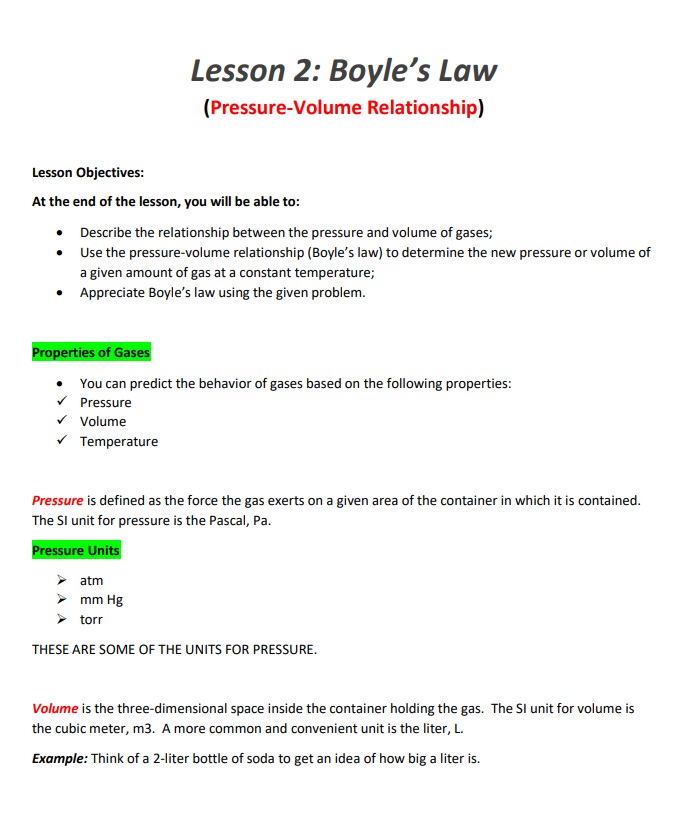Gas Behaviors in Science
Summary:
The Gas Behaviors in Science note describes three lessons in Science 10 that cover different aspects of gas laws. In Lesson 2, students will learn about Boyle’s Law, which focuses on the pressure-volume relationship of gases. They will discover that the pressure of a gas is inversely proportional to its volume, meaning that as the pressure increases, the volume decreases, and vice versa.
In Lesson 3A, students will explore Charles’s Law, which examines the volume-temperature relationship of gases. They will learn that as the temperature of a gas increases, so does its volume, and vice versa. Understanding this relationship is important in explaining the behaviour of gases in various conditions, such as in engines or when studying the properties of the atmosphere.
Lastly, Lesson 3B covers Gay-Lussac’s Law, which also focuses on the volume-temperature relationship of gases. Students will learn about the relationship between pressure and temperature, which can be used to explain the behaviour of gases in different settings. Overall, these three lessons provide a foundation for understanding the properties and behaviour of gases, which is important in many areas of science and technology.
Excerpt:
Gas Behaviors in Science
Lesson 2: Boyle’s Law
(Pressure-Volume Relationship)
Lesson Objectives:
At the end of the lesson, you will be able to:
Describe the relationship between the pressure and volume of gases;
Use the pressure-volume relationship (Boyle’s law) to determine the new pressure or volume of a given amount of gas at a constant temperature;
Appreciate Boyle’s law using the given problem.
Properties of Gases
You can predict the behaviour of gases based on the following properties:
Pressure
Volume
Temperature
Pressure is defined as the force the gas exerts on a given area of the container in which it is contained.
The SI unit for pressure is the Pascal, Pa.
Pressure Units
atm
mm Hg
torr
THESE ARE SOME OF THE UNITS FOR PRESSURE.
Volume is the three-dimensional space inside the container holding the gas. The SI unit for volume is the cubic meter, m3. A more common and convenient unit is the litre, L.


Reviews